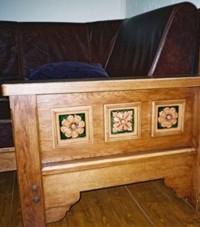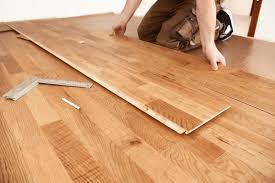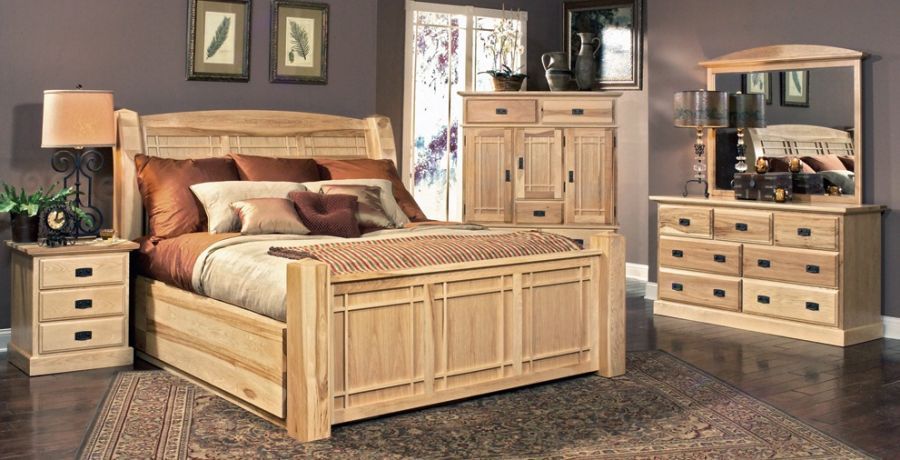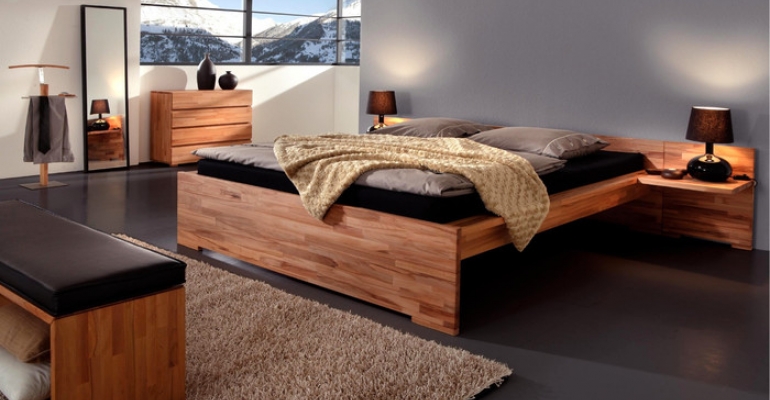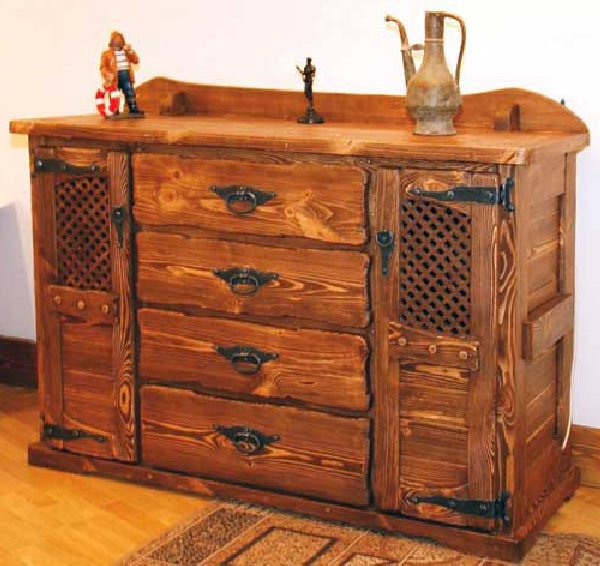Solid wood furniture
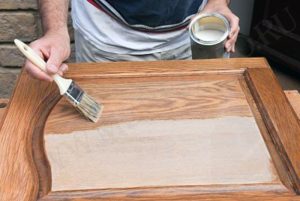 To emphasize the natural beauty of solid wood furniture and protect it from the negative effects of the environment, various protective and decorative coatings (transparent and opaque) are used.
To emphasize the natural beauty of solid wood furniture and protect it from the negative effects of the environment, various protective and decorative coatings (transparent and opaque) are used.
Transparent materials used in the decoration of wooden furniture include varnishes, varnishes, wax-based mastics and organic oils. They not only do not hide the texture and natural color of wood, but also very beneficially emphasize its natural beauty.
Opaque coatings include various paints that hide texture and color, as a result of which, as a rule, they are used in the manufacture of furniture from solid wood of low-value species.
Surface preparation for finishing work
In order for a protective and decorative coating to qualitatively cover a wooden surface, the latter must be properly treated. Wood preparation is conditionally divided into two successive stages: carpentry and decoration.
Joinery
During the carpentry preparation of wooden furniture, all major mechanical defects are removed: waves from the cutting tool, knots, tears, etc., after which the surfaces are carefully sanded. Local seals and inserts are allowed only under opaque finishing materials. Dirty and uneven in color spots, dents, scratches, tearing of fibers, undulating surfaces or their increased roughness for applying transparent coatings are in no way allowed.
Finish
Finishing operations include surface degreasing, bleaching and priming (putty is allowed under paints).
Resin removal is necessary to increase the adhesion of the coating to a wooden surface and is mandatory in the manufacture of furniture from solid conifers (pine, cedar, etc.). The solvents are turpentine, alcohol, acetone, soda or even gasoline.
After you can start bleaching wood. Bleaching is done under the transparent finish of furniture made of light wood and to restore the natural color of the wood, but with this operation you can remove local stains from glue. For bleaching, a mixture of hydrogen peroxide with ammonia, bleach or oxalic acid is used.
Grinding
After bleaching, the lint must be removed from the surfaces of wooden furniture under the paintwork. Even with the most thorough polishing, pressed fibers remain on the wood – fibers, which can later rise and significantly spoil the aesthetic appearance. To remove lint, wooden surfaces are wetted with ordinary water (sometimes with the addition of wood glue). After a few hours, the pile begins to dry, warp and rise above the main surface. To remove it, use a sharp cycle or fine-grained sandpaper. To completely remove the pile, the wetting and grinding operations are repeated two to three times.
Padding
After polishing, the wooden surfaces of solid wood furniture must be primed. The primer will increase the surface strength of the wood, fill micropores and provide an opportunity for a more even application of the finishing decorative material. In the manufacture of wooden furniture, primers based on epoxy resins are usually used. Apply the primer with a roller, brush or spray.
After the soil is completely dry, you can start painting work.
Painting and finishing work
Varnishes and paints can be applied to natural wood furniture using a roller, brush, air spray from a spray gun, dipping, etc. Depending on the technology and type of paint and varnish material, the coating can be applied several times.
Quality furniture made from natural solid wood has perfectly smooth and smooth painted surfaces. If you simply apply varnish or paint, there will remain irregularities, therefore, after applying the paintwork, the surfaces are further refined – sanded with fine-grained abrasive paper and special pastes.
After polishing the finish coat, the solid wood furniture is polished. Polishes in their composition contain fatty oils (to reduce friction) and alumina (which serves as a thin abrasive). After polishing, it is necessary to wait a couple of hours and remove the remaining polishing oil with a soft sponge or swab, and then wipe the wooden surfaces dry with a calico or flannel fabric. If this is not done, the polished surface will have a matte shade and will become dirty quite quickly.
If low-grade wood was used in the manufacture of furniture from solid wood, then it can be given an expensive look with the help of varnishes, paints, tinting, tinting, veneering, etc., this treatment is called imitation finish.
Sometimes they use the method of airbrushing, – they apply drawings on the wooden surfaces that mimic the texture of valuable wood species. The principle of airbrushing is to finely spray paint under high pressure on wooden surfaces. The most suitable for this is wood with longitudinal stripes from annual rings, but it is rather difficult to achieve a complex imitation using an airbrush.
